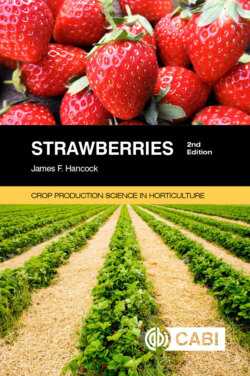Отрывок из книги
STRAWBERRIES, 2ND EDITION
This series examines economically important horticultural crops selected from the major production systems in temperate, subtropical and tropical climatic areas. Systems represented range from open field and plantation sites to protected plastic and glass houses, growing rooms and laboratories. Emphasis is placed on the scientific principles underlying crop production practices rather than on providing empirical recipes for uncritical acceptance. Scientific understanding provides the key to both reasoned choice of practice and the solution of future problems.
.....
Origin of decaploid species
Because of the current sympatry between the octoploid F. virginiana ssp. platypetala, diploid F. vesca ssp. bracteata and the decaploid F. cascadensis in the Cascade Mountains of Oregon, it was originally hypothesized that F. cascadensis originated from hybrid polyploid speciation between the two octoploid and diploid congeners (Hummer, 2012). However, Wei et al. (2017a) discovered its origin was more likely due to an ancient hybrid speciation in Beringia. In a phylogenetic analysis of linkage-mapped chromosomes from targeted sequences, they found that the additional subgenome of F. cascadensis was derived from a F. iinumae-like diploid progenitor rather than F. vesca ssp. bracteata. The F. cascadensis found in the Oregon Cascade Mountains may be a remnant of a more widespread species that survived in a Willamette Valley refugium during the last glacial maximum (Dillenberger, 2018). Whether F. cascadensis and the other decaploid F. iturupensis have a common ancestor or evolved independently is unknown. They could have both evolved in Beringia and then moved southwards in different directions along the Pacific Ocean and became isolated (Wei et al., 2017a).
.....
